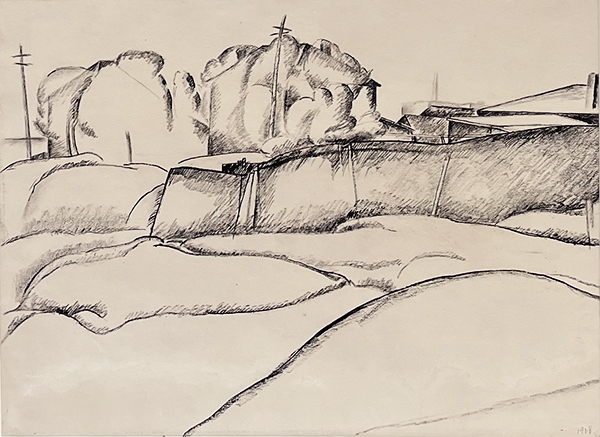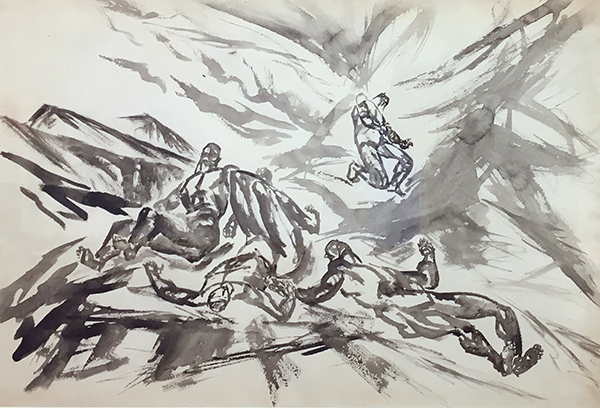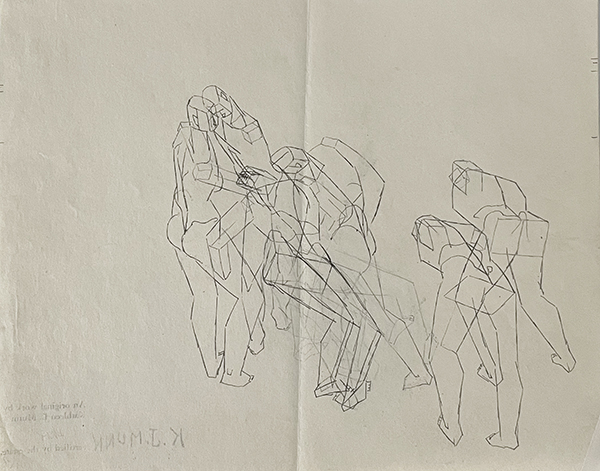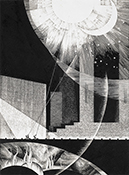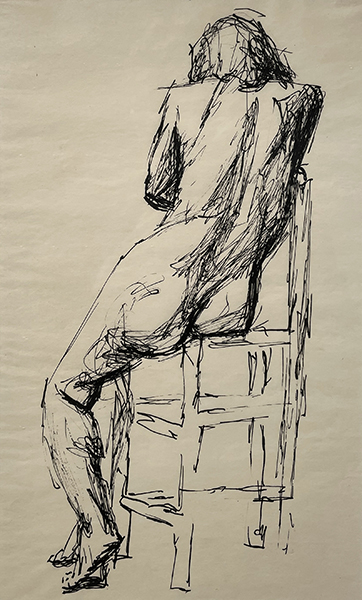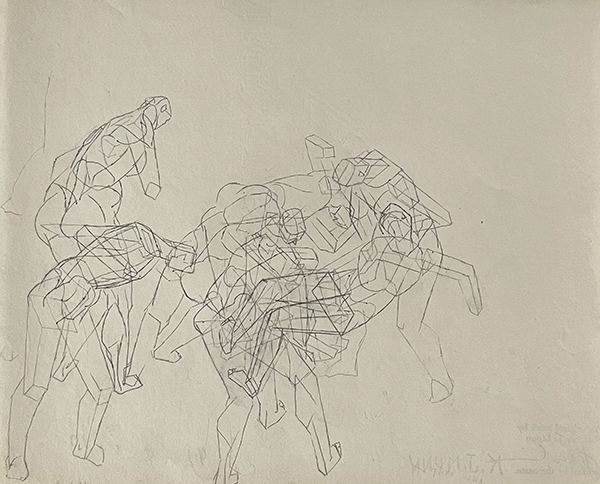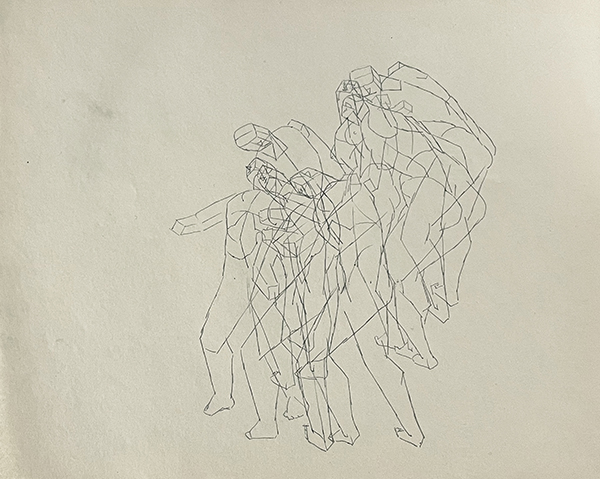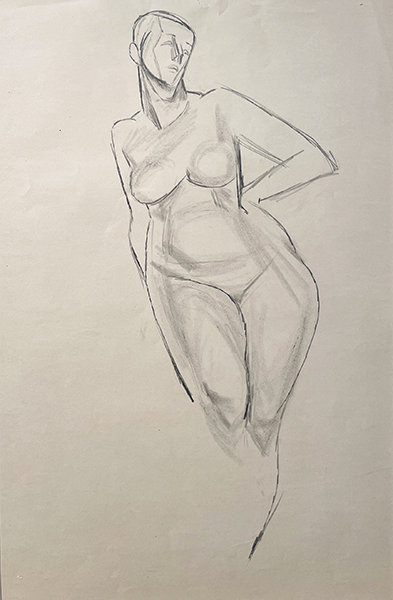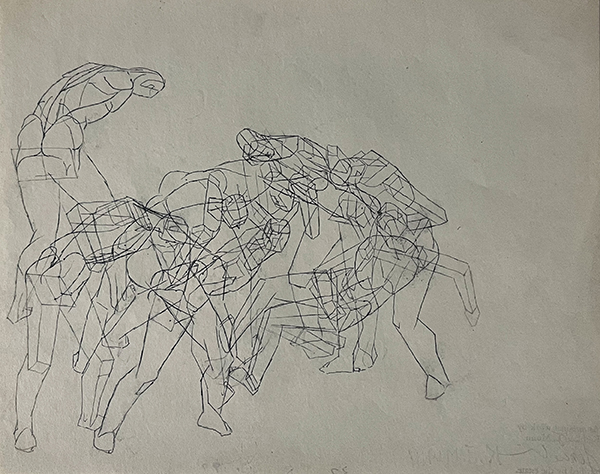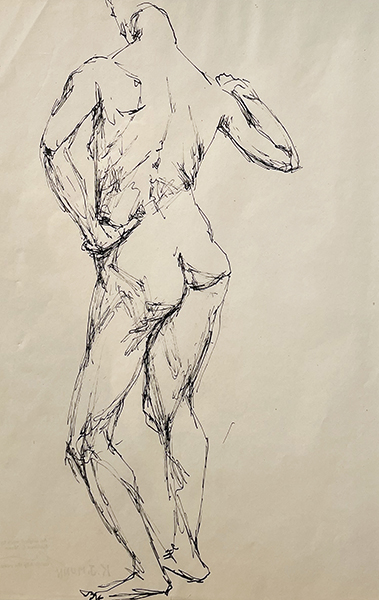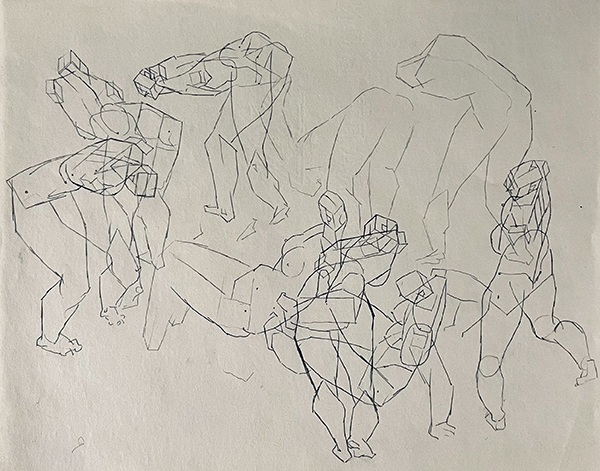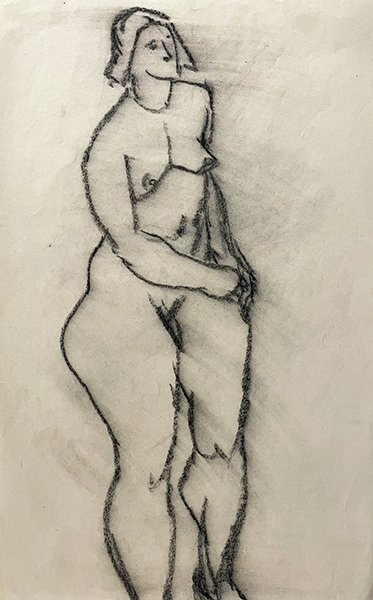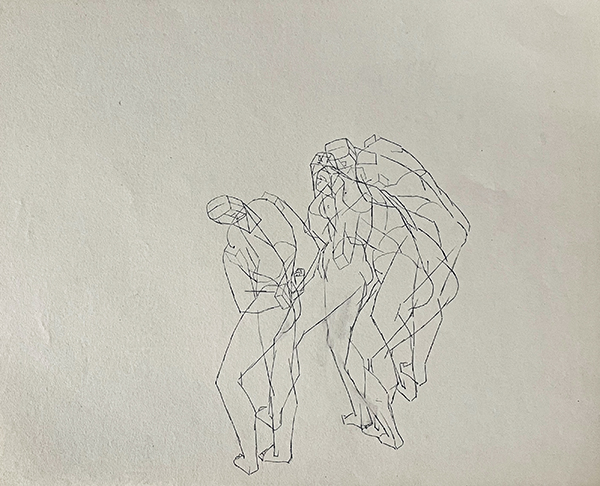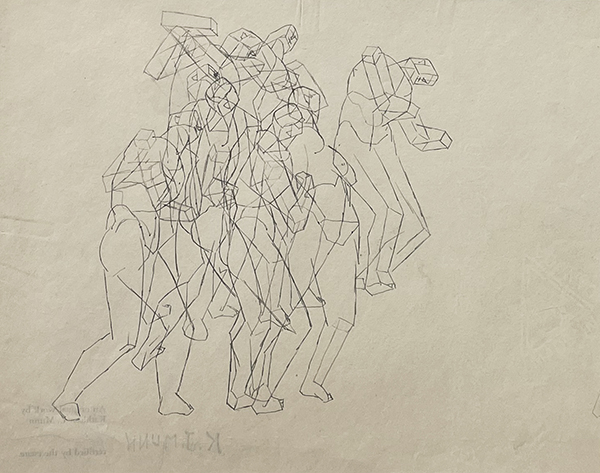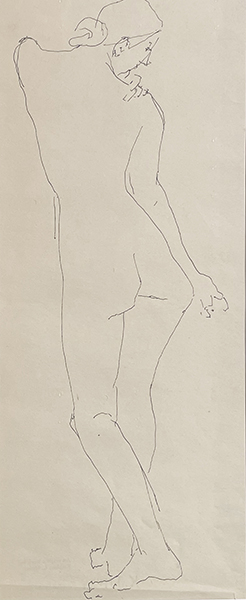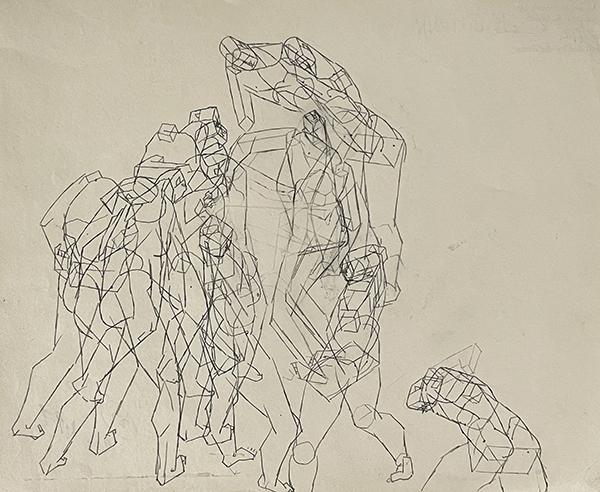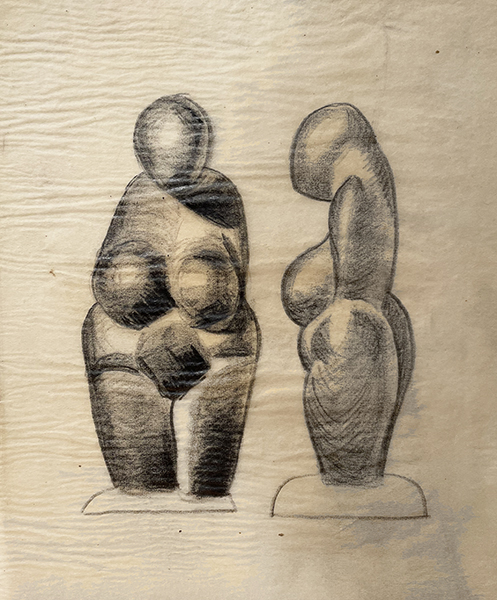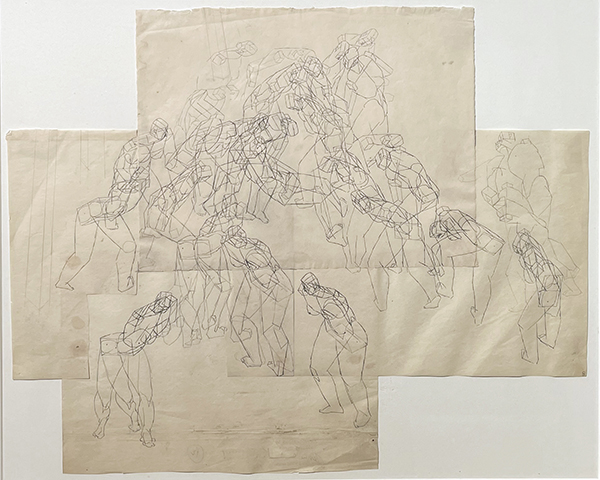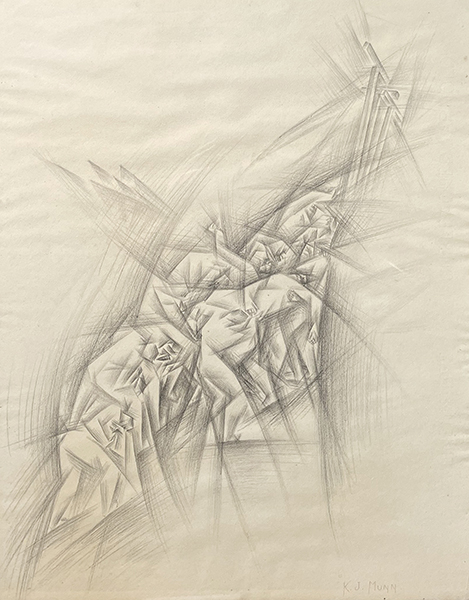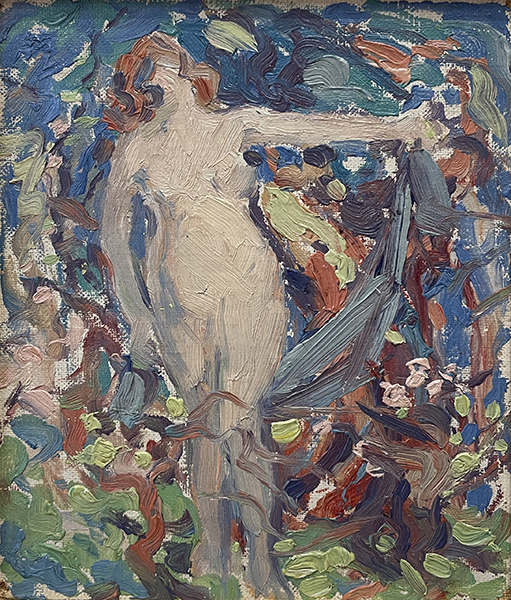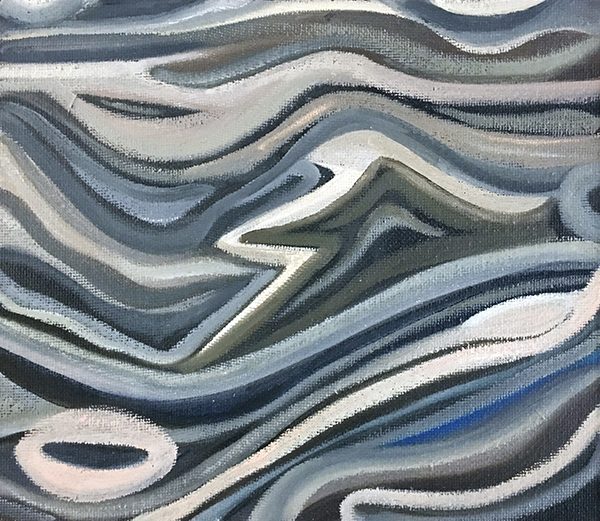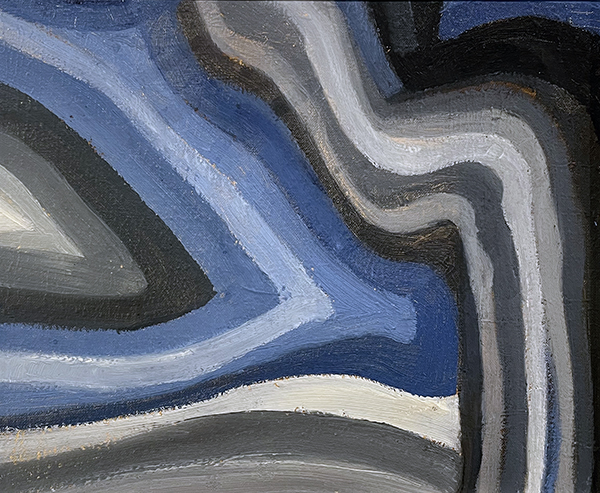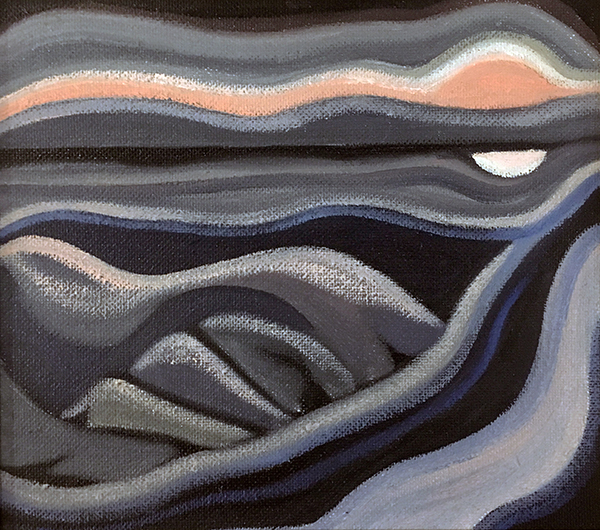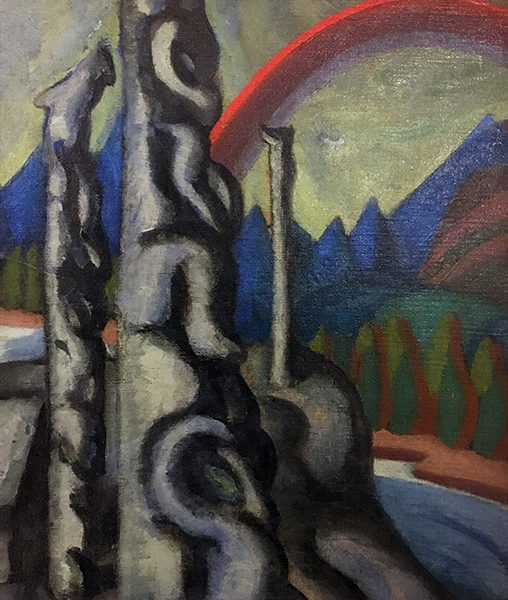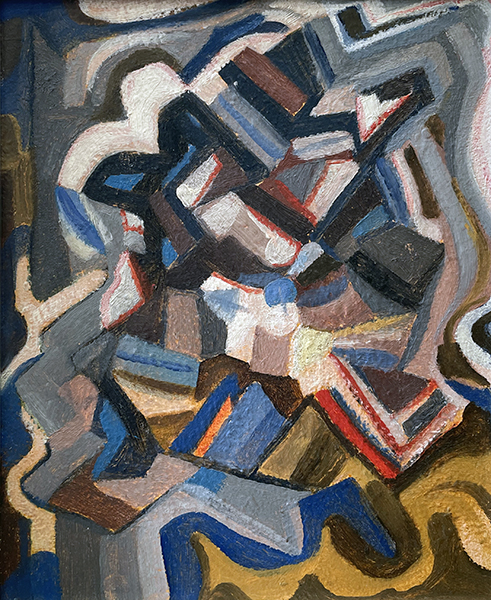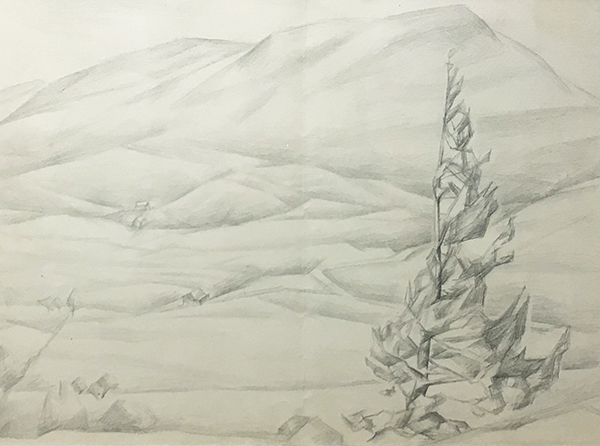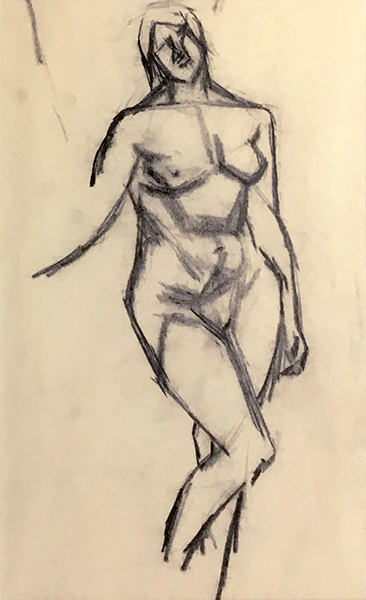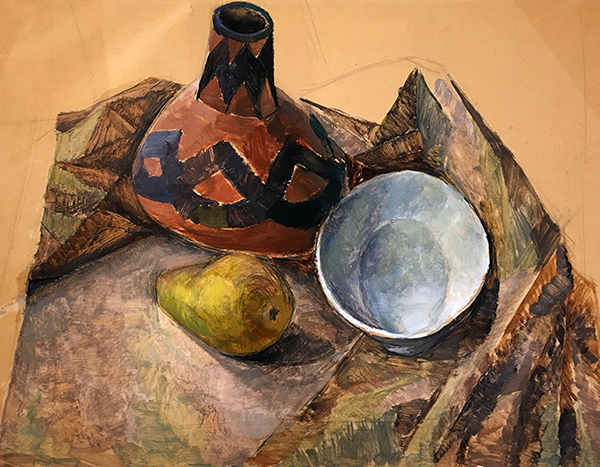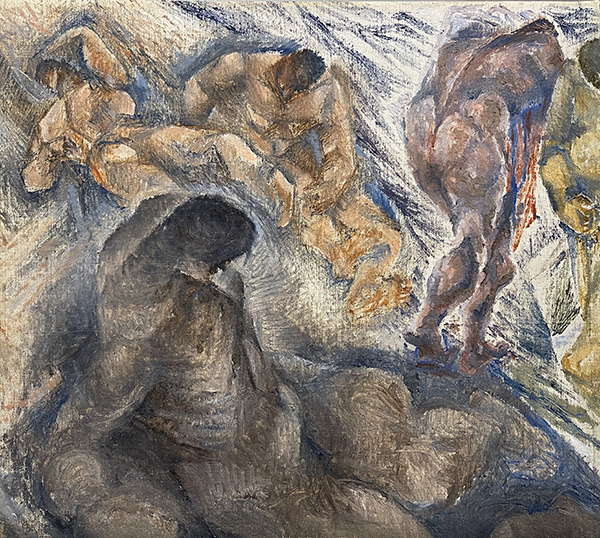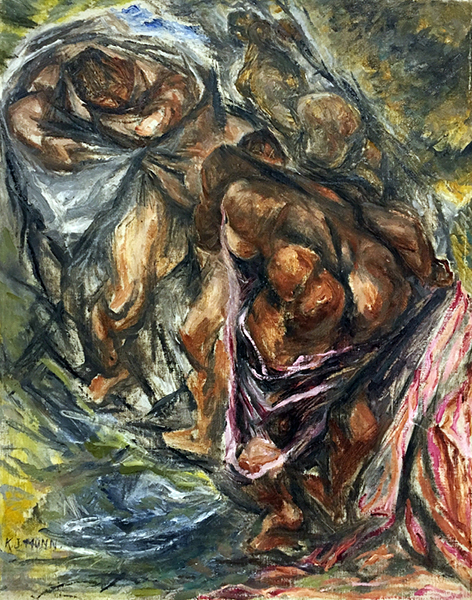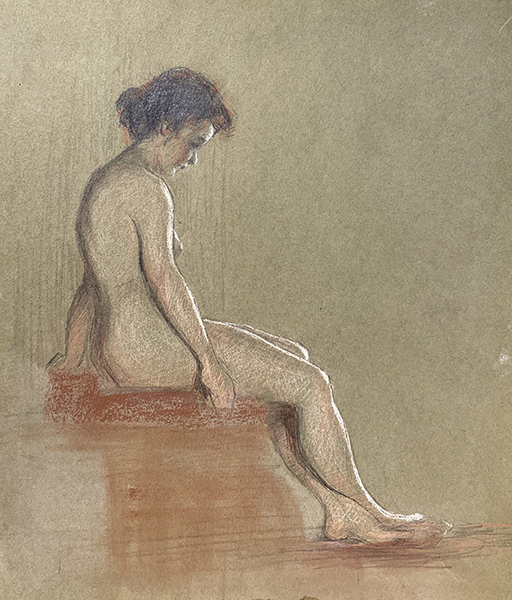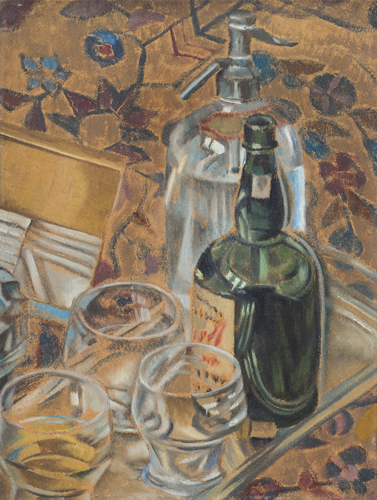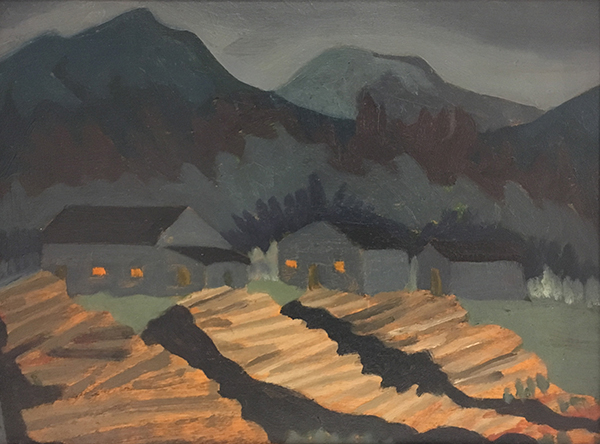The Making of Canadian Modernism
April 23 to May 12, 2022Gallery Gevik is pleased to present The Making of Canadian Modernism, an exclusive exhibition of paintings and drawings that traces how Lionel LeMoine Fitzgerald (1890-1956), Bertram Brooker (1888-1955), Kathleen Munn (1887-1974), and Lowrie Warrener (1900-1983) strove to shake the post impressionism of the Group of Seven in the first half of the twentieth century. Following a year of planning, we’ve gathered an outstanding selection of rare and little seen works from various private collections available to view from April 23 to May 14, 2022.
Agony in the Garden (Passion Series), c. 1934
ink wash on paper, 15" × 22"Working Drawing for Passion Series #7, c.1927-38
graphite on paper, 8" × 10"Working Drawing for Passion Series #3, c.1927-38
graphite on paper, 8" × 10"Working Drawing for Passion Series #1, c.1927-38
graphite on paper, 8" × 10"Working Drawing for Passion Series #6, c.1927-38
graphite on paper, 8" × 10"Sculptural Study (Art Students League), c. 1912-27
graphite on notebook paper , 7.5" × 6.5"Study for Deposition (Passion Series), c. 1927-38
graphite collage , 14.5" × 18" (SOLD)All Sorts – Woodpile Abstract Impression, 1978 (SOLD)
oil on board, 14" x 12.5" (SOLD)Still Life with Vase, Pear, and Bowl (SOLD)
oil on paper, 12.5" x 16.5" (SOLD)Figurative Abstraction (SOLD)
oil on canvas, 21 3/4" × 16 3/4" (SOLD)Lumber Camp at Night, Skeena River, B.C., 1931 (SOLD)
oil on board, 9" × 12" (SOLD)About the Exhibition
Some say the story of Canadian modernism begins in 1927 when Lionel LeMoine Fitzgerald met Bertram Brooker while he was on a business trip to Winnipeg. Brooker, a self-taught artist experimenting in mystical abstraction, appreciated Fitzgerald’s romantic, Cezannesque landscapes and his grounded personal style while Fitzgerald was instantly struck by Brooker’s Cubist experimentations. While both artists obsessed over form and colour, Brooker was by far the bigger risk-taker, keen to stand out in the Toronto art world which was then dominated by the influence of the Group of Seven.
Although Brooker is often cited as Canada’s first modernist, having mounted an exhibition of his abstract paintings in 1927, Toronto-born Kathleen Munn had already exhibited her Cubist-influenced paintings at the annual RCA exhibition four years earlier. Munn’s colourful figurative work featured an overlayed Cubist design, a style she inherited from her time spent in New York and study of Cezanne, Brancusi and Archipenko while on a tour of Europe in 1920. Munn was bullheaded and cheeky and her art reflects an insatiable spirit – “Nationalism is going out,” she wrote in 1925, “provincialism and insularity are less excusable than ever before. We are becoming world minded.”
Following his graduation from OCAD in 1921, Lowrie Warrener traveled to Paris, where his flattened, decorative approach to landscape made important strides. Warrener’s masses of pure colour were remarkable – powerfully contoured and whimsical, and reminiscent of Van Gough, the Fauves, and Kandinsky. Upon his return to Canada, Warrener was drawn back under the influence of Arthur Lismer and Lawren Harris but managed to readdress the Canadian landscape with a more intense glow of light and monumental form and body, echoing the bold, musical formations emanating from Brooker’s paintbrush at the time.
By the 1950s, Warrener, Fitzgerald, Brooker and likely Munn had she not been forced to give up painting in the 1940s to care for her ailing sister, were letting their creativity run wild, producing strikingly modernist landscapes and figurative work alongside paintings of pure abstraction. These four pioneers paved the way for generations of post-war artists to come and we’re so excited to share this special exhibition with all of you.

